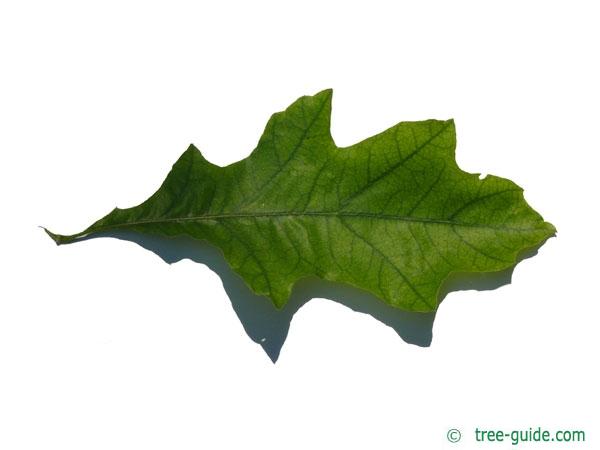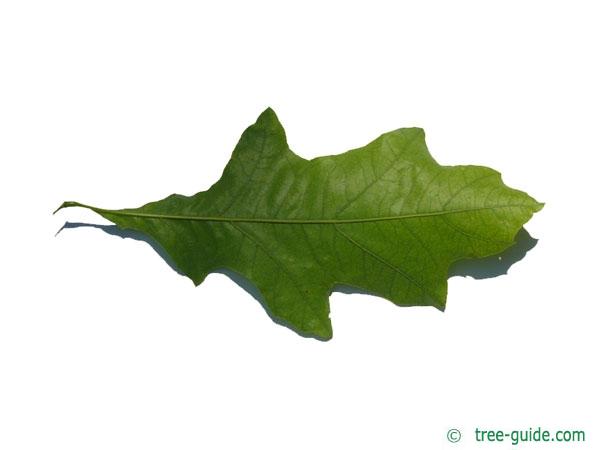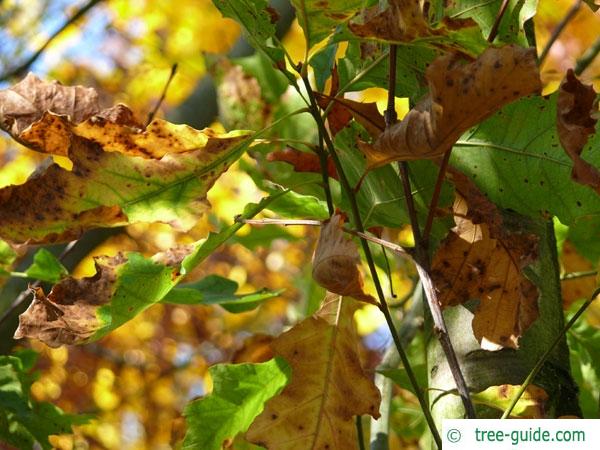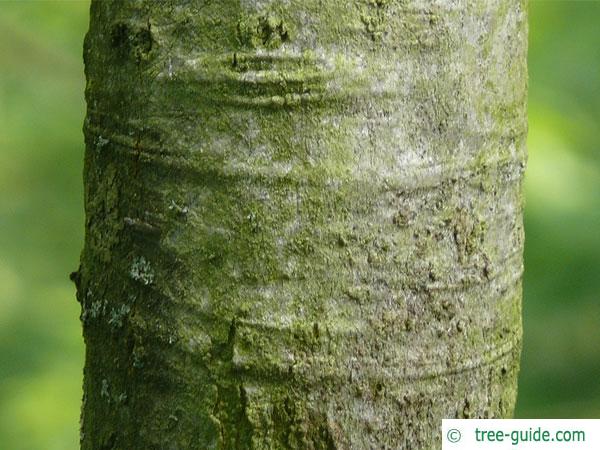Basisdaten
The Shumard oak is native to eastern North America. The oak can be several hundred years old. The wood is used in the furniture industry and the large acorns are a food source for many animals.
Tree profile
The young leaves of Shumard red oak are sinuate, the older leaves are deep sinuate. The lobe ends are tapered. The leaf upside is dark green, the underside is lighter. The leaf margin is smooth.
The flowers form greenish - yellow drooping catkins. Flowering and leafing sprout together.
The acorns are quite large with up to 3 cm (1.2 in). They have a flat fruit cup and a short stalk.
Young twigs are olive green and shiny, the older branches are brownish. The buds are light and occur most frequently on branch end.
single tree, planting in groups, parks and garden
Oaks additional information
overview leaves | overview blossoms
overview fruit | overview trunks
overview winter | overview trees














